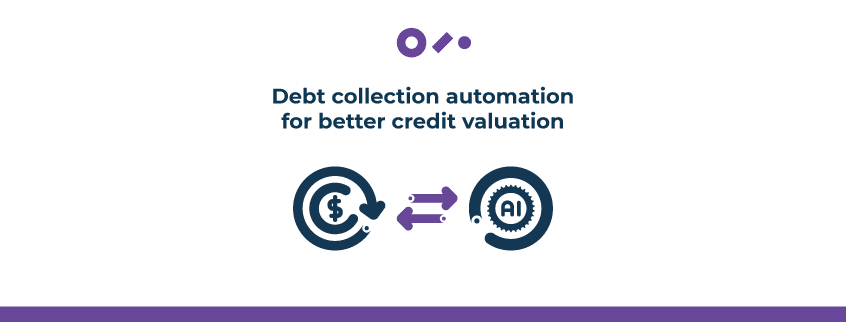The dark days of debt collection are over; an abundance of opportunities lie ahead by using digital automation for debt collection practices

The need for AI-powered automation for debt collection
Debt collection practices have evolved tremendously in the last few decades with the advent of technological aids. These help collection agencies and individual creditors manage debt recovery with better efficiency. Earlier, debt collection was a through-and-through call-and-respond industry. However, this mode of operation brought in a horde of errors and miscalculations, often ending in legal battles with dire implications for both the debtors and collectors. While debt defaults still lead to complicated outcomes, often accompanied by large penalties, there is a way out of such issues through automation for debt collection.
Artificial Intelligence for debt collection
Automation powered by Artificial Intelligence has been around for a while, and with progressive advancements made by tech scientists in Machine Learning capabilities, its applications for different industries are nothing but endless. Coming back to the Debt Collection industry, automation has a much larger role to play in this domain, compared to its earlier use as a subordinate mechanism. AI tools such as voice recognition systems, web-portal assistants, chatbots, and automated payment processing mechanisms, all comprise the beginning of the automation days for debt collection.
Debt collection is a type of financial cycle that requires carrying out many administrative activities in a repetitive mode. These tasks are tedious, inclined to create human error, and often comprise manual tasks that eat a lot of time. Add to this is the chance of late payments being missed, debtors not being traced on time, and improper/aggravated communication between collection agencies and debtors. Not only can this harm the relationship between debt collection businesses and their customers, but also unnecessarily elongates and complicate the process.
Talking about tech-fuelled automation for debt collection, AI helps boost two significant areas within the debt collection industry. The first one involves taking the profitability of a company to a new strength by freeing up human resources. The second involves deploying algorithm-powered decisions that offer a particular kind of settlement to a debtor depending on various factors.
The rise of a Digital Workforce for better debt collection customer support
Automation refers to a ‘Digital Workforce’ that delivers automated solutions for customers or workers to access and implement in their daily operations. When mundane and repetitive tasks are automated, employees working in a debt collection agency can optimize their workload and spend more time on value-added tasks. Automation can get rid of large spreadsheets, maintain uniform communications, speed up invoice management, and provide quick follow-ups, and autopilot calculations in collection notices, among other metrics. At Simplifai, we have developed a super-efficient AI-powered solution called the Digital Employee, customized specifically for a variety of debt collection practices carried out all over the world.
What Simplifai’s Digital Employee can do for your debt-collection business
- Receive inquiries from debtors related to invoices, postponements, objections, outstanding debt, receipt of payments, change of address, and more
- Validate customer documents, and archive different document types such as invoice copies, account statements, credit reports, receipts of payments, and others
- Forward deferrals, postponements, and objections to relevant stakeholders
- Identify financial patterns in debtor behavior, analyze these patterns, and avoid undesirable results such as defaults, legal battles, and foreclosures
All the above automation for debt collection activities requires manual tasks that may decrease the value of human efficiency. They are repetitive in nature for a human being to perform every day on a continuous basis. They may impart extensive work pressure on a collector’s or a collecting agency’s efficiency and productivity.
Potential advantageous outcomes of automation for debt collection
Automation for debt collection simplifies clerical tasks, thus enabling businesses to focus their efforts on managing more demanding tasks like monitoring debtor activities, spending patterns, debtors’ financial outlook, and so on.
- Lenders get a deeper understanding of customer defaulters. With more advanced systems, customers can be classified based on their debt backlogs, and more effective systems can be designed for them.
- Automated transactions can reduce overall time and resource investments, and significantly improve better customer service.
- Virtual Assistants can automatically reply to customers, further providing an opportunity to automate non-revenue generation-based transactions. This can significantly reduce the flood of unproductive queries handled by agents and they can in turn invest their time in more sensitive tasks.
- Potential defaulters can be identified using Machine learning (ML) and Natural Language Processing (NLP).
Debt collection is not just about recovering the overdue; rather it goes much beyond this requirement. Debt collection is also about recommending a way out of a crisis, and automation can act as a bridge between lenders and customers. Automation for debt collection solutions can potentially transform the way collections are taken care of, subsequently helping lending firms improve customer experience and create rapid business value.


